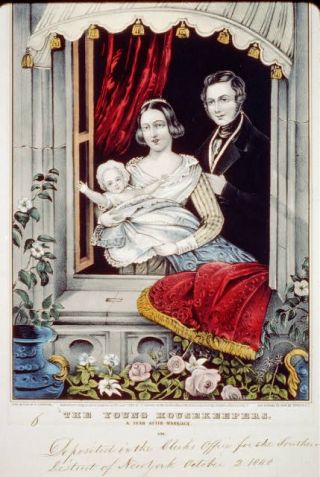Marriage
Aztec Marriage: A Lesson for Chief Justice Roberts
Has "a single social institution" formed the basis for human civilization? No.
Posted June 26, 2015
Anthropologists are clear on the issue:
The results of more than a century of anthropological research on households, kinship relationships, and families, across cultures and through time, provide no support whatsoever for the view that either civilization or viable social orders depend upon marriage as an exclusively heterosexual institution. Rather, anthropological research supports the conclusion that a vast array of family types, including families built upon same-sex partnerships, can contribute to stable and humane societies.
So why do opponents of marriage equality continue to try to naturalize marriage?

The latest example comes from the dissenting opinion of Chief Justice John Roberts, issued today in the full decision by the Supreme Court on Obergefell vs. Hodges—the decision that has just made marriage equality the law in the United States.
Roberts is outraged: "Just who do we think we are?" he concludes, after complaining that the court "orders the transformation of a social institution that has formed the basis of human society for millennia, for the Kalahari Bushmen and the Han Chinese, the Carthaginians and the Aztecs."
What a bizarre selection! I will leave it to specialists in the San peoples of the Kalahari, Han dynasty China, and whoever John Roberts means when he says "Carthaginians," to respond in detail.
I would merely note that Roberts could hardly have picked a more challenging set of societies to support his claim that marriage is, and has been for millennia, a stable basis for social organization. San peoples engage in what researchers characterize as marriage and divorce; Han period men were practitioners of "serial monogamy" with concubinage; and Carthaginian women who were Roman citizens could marry and divorce freely, while St. Augustine described early Christian Carthage as "a cauldron of unholy loves"—a cauldron in which he immersed himself, producing a son without benefit of marriage.
I don't imagine John Roberts meant to endorse divorce, mistresses, and unwed parents as the basis for human society.
But I am an expert in the prehispanic societies of Mexico and Central America, and specifically, in the ways they organized sexuality and gender relations. The (presumably unintended) implications of Roberts' other examples pale in comparison to what his inclusion of the Aztecs brings into the argument.
In his selective list of other ancient societies Roberts managed to pick instances where marriage (in the sense of a legal economic relationship, if nothing else) was a one-to-one proposition—if we ignore the legal standing of formal relations with women called "concubines," which made Han marriage formally a one man, many women proposition.
By including the Aztecs, John Roberts must accept polygamy as part of his definition of "a social institution that has formed the basis of human society for millennia." As archaeologist Susan Evans wrote in 1993, the Aztec nobles "practiced polygamy so enthusiastically that there were not enough bureaucratic jobs for all their offspring."
I don't expect Justice Roberts to read the archaeological literature, but this fact is not a secret: basic outlines of Latin American legal history include overviews of Aztec law, including laws governing marriage. Such sources describe other Aztec marriage practices that Justice Roberts presumably is nostalgic for, including the normal use of matchmakers, and remarriage of widows to their deceased husband's brothers.
Of course, John Roberts meant none of this. He doesn't want to reintroduce concubinage and polygamy (I assume).
What he does want is to distract people from what he opposes: acceptance that in the contemporary US, marriage is not predicated on the capacity for specific biological states like pregnancy.
Roberts moves from his introductory statement to a claim that marriage has traditionally been between "a man and a woman," ignoring the existence of multiple marriage in his own historical examples.
That leads directly to his argument that marriage
arose in the nature of things to meet a vital need: ensuring that children are conceived by a mother and father committed to raising them in the stable conditions of a lifelong relationship.
That is simply bad history. Children have been raised by extended families, or cared for by wider networks in small scale societies (like the San). The right to marry has been extended to couples without children, even couples who could never have biological offspring of their own due to age.
Adoption has a long history, allowing people without biological offspring to raise children, if that was their wish. No society I know prohibited childless people from the legal status of marriage.
Nothing prevents same sex couples from making the commitment to raising children that Roberts claims to hold so precious and that he claims is the universal grounding of marriage.
Nothing—except discrimination in the law.
In fact, history shows us that for quite a long time in the European tradition Justice Roberts weirdly abandoned in trying to frame this spurious argument, marriage has been about something else entirely: interpersonal intimacy, love.
Mexica poets understood this:
Maybe the woman in me does crazy things,
My small heart grieves, how should I make love,
to the one who is my man?
Why should we value one part of Aztec culture and ignore the rest? Why reduce marriage—a multifaceted legal status that brings economic and social rights to people who find themselves in love and wishing to ensure their survival together—to a biological imperative?




